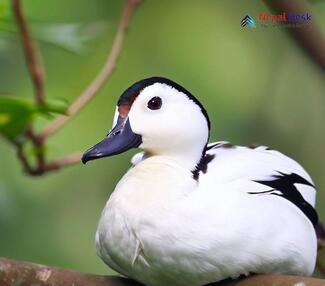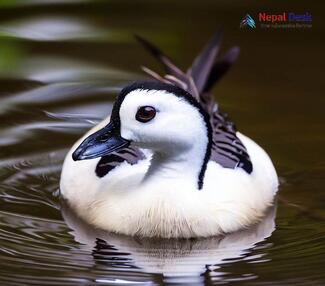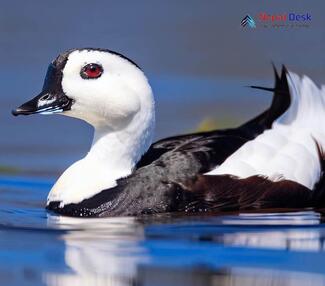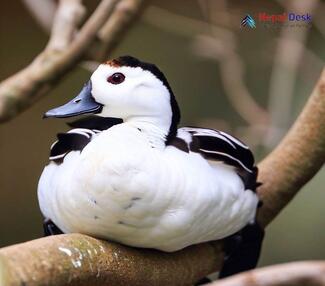Nepal, a country renowned for its rich biodiversity and stunning landscapes, is a paradise for bird enthusiasts. Among the hundreds of bird species that inhabit this region, the Cotton Pygmy Goose (Nettapus coromandelianus) is a fascinating and unique waterbird that deserves our attention. Despite being relatively unknown compared to some other avian species, the Cotton Pygmy Goose has captivated many bird lovers with its diminutive size and striking appearance. The cotton pygmy goose was formally described in 1789 AD by the German naturalist Johann Friedrich Gmelin. In Newzealand, it is sometimes called white-quilled pygmy goose. Now let us look at the various facts and details about this bird:
A Glimpse into the World of the Cotton Pygmy Goose
The Cotton Pygmy Goose is one of the smallest waterfowl species found in Nepal. Weighing only 160-250 grams and possessing a wingspan of only 50-53 centimeters, this tiny goose captures the heart with its delicate beauty. Males are remarkable for their white plumage with greenish-black upperparts and slate-grey underparts. Contrastingly, females are adorned with brownish-grey plumage dotted with delicate white spots.
Habitat and Distribution in Nepal
The Cotton Pygmy Goose is widely distributed across Asia, particularly throughout South Asia, Southeast Asia, and Australia. In Nepal, these little birds prefer shallow wetlands such as swamps, marshes, and small bodies of freshwater like ponds and lakes. They are primarily found in lowland areas of Terai and have occasionally been spotted around Rara Lake – the largest lake in Nepal – during migration season.
Behavior and Feeding Habits
Cotton Pygmy Geese flourish in their aquatic environment by feeding on aquatic vegetation like algae, seeds, leaves, and stems. At times they supplement their diet with insects or small fish if available. These birds are excellent swimmers with remarkable agility as they dive underwater to forage efficiently. While they may be rather shy and elusive, fortunate birdwatchers who encounter the Cotton Pygmy Goose can observe their unique feeding strategies and nimble movements.
Conservation Efforts and Ecotourism Opportunities
Amid increased habitat loss and wetland degradation, the Cotton Pygmy Goose's conservation status remains classified as "Least Concern" by the International Union for Conservation of Nature (IUCN). However, ongoing efforts are crucial to preserve the majestic wetlands of Nepal, which offer a safe haven not only to the Cotton Pygmy Goose but also to countless other avian species. Birdwatching tourism is a great way to support these efforts while giving bird lovers a special opportunity to admire these marvelous creatures in their natural environment.
If you've been inspired by this fascinating little bird, why not consider a trip to Nepal? A journey to explore its rich biodiversity and hidden secrets – like the enchanting Cotton Pygmy Goose – is one you'll surely never forget. Remember, responsible ecotourism can make all the difference in securing a bright future for these extraordinary birds and their magnificent habitat.




